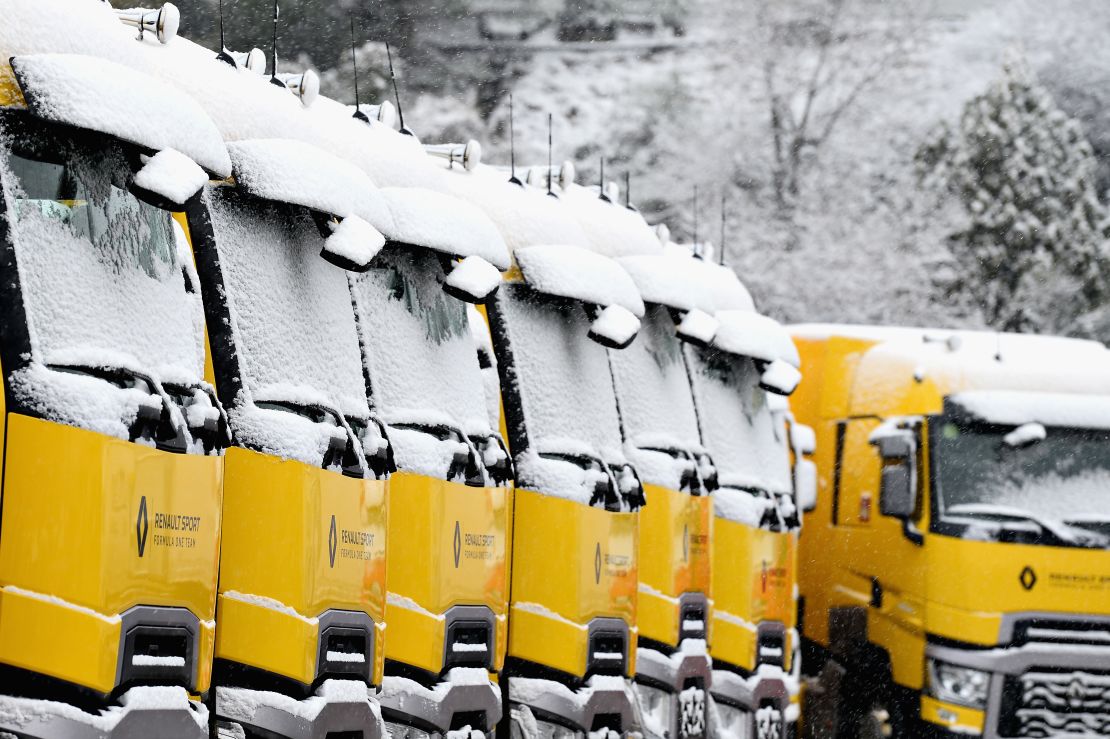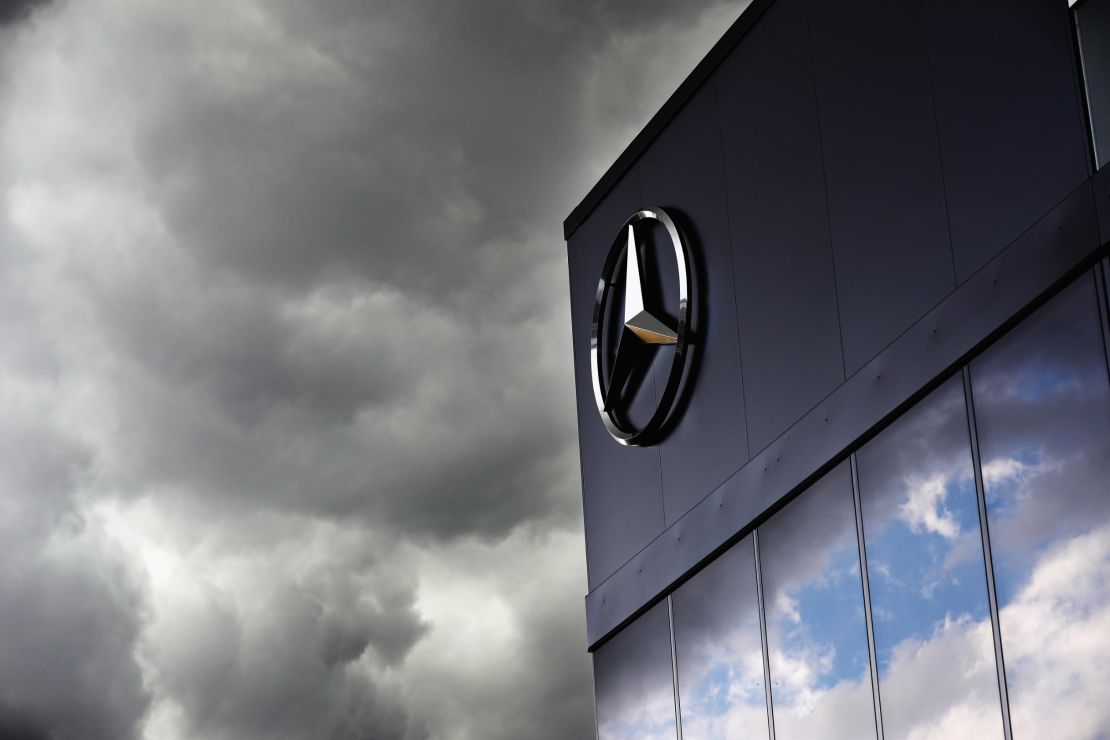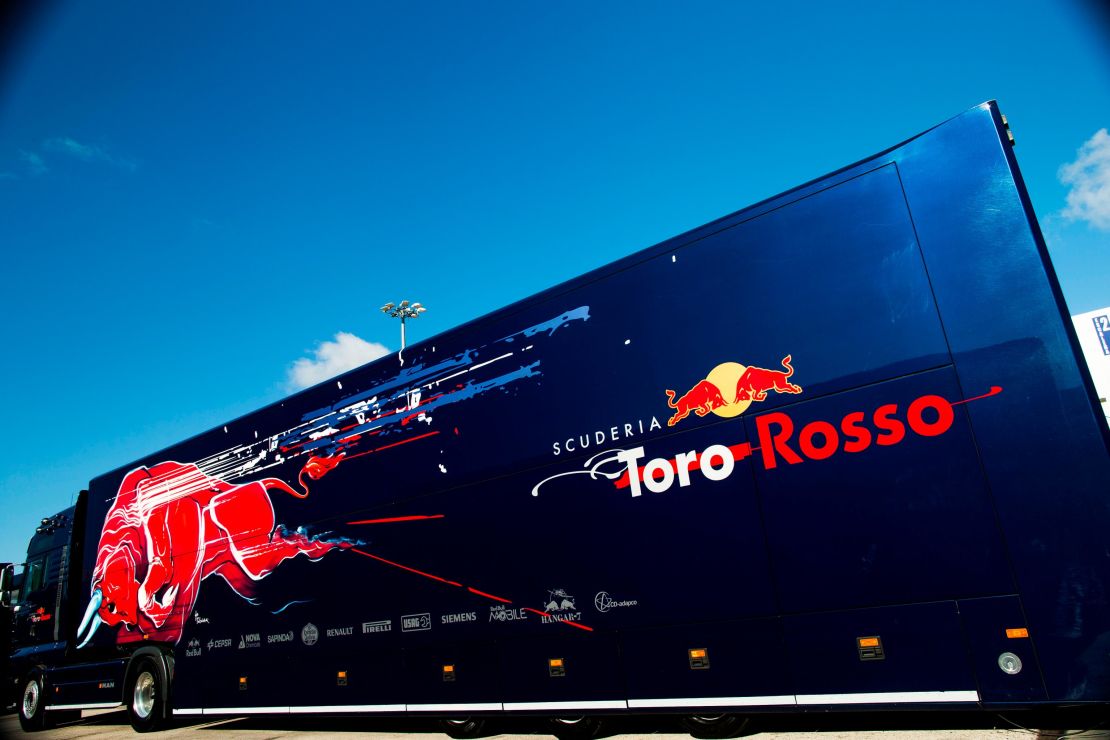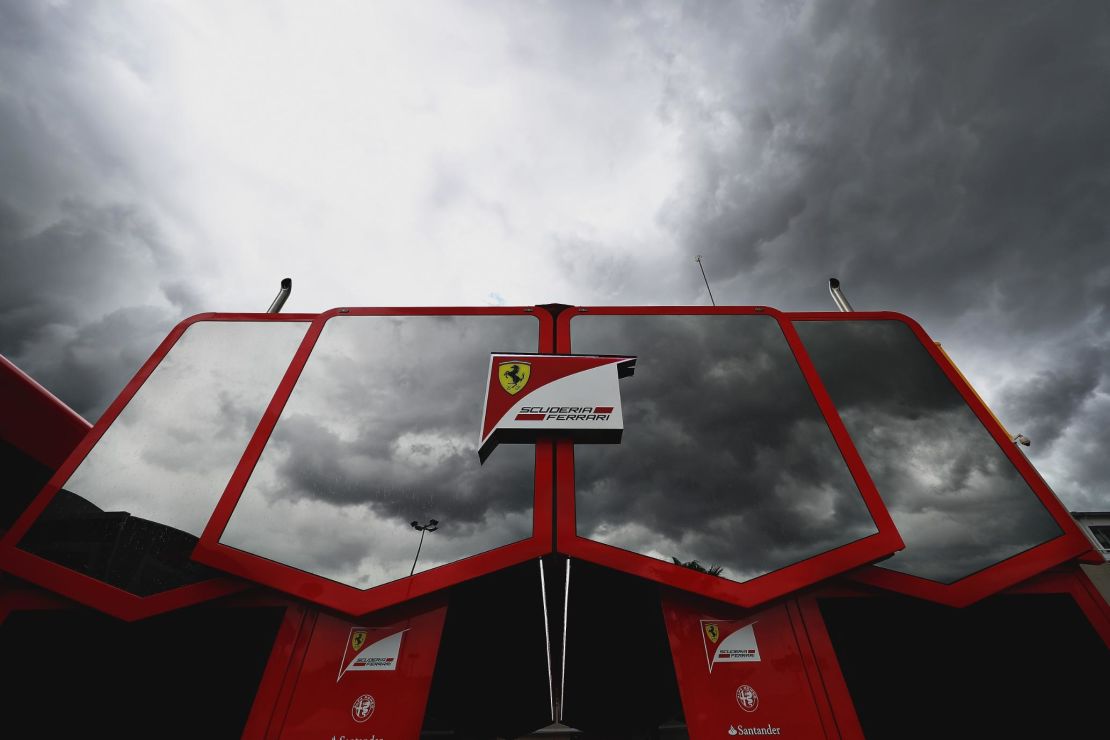Only one race into Formula One’s inaugural triple-header, Renault team boss Gilles Carraro was already “scared it will become a normality.”
By Sunday’s British Grand Prix, teams will have driven some 1,687 miles (2,715km) in a grueling 17-day road trip – the first time the championship has featured three races in as many weekends since its inception in 1950.
Starting at the Circuit Paul Ricard in the south of France, a legion of trucks journeyed up through Italy, to Spielberg’s Red Bull Ring for last weekend’s Austrian Grand Prix.
From there, whether buoyed by victory or crushed by defeat, the teams negotiated the final leg to Silverstone for the British Grand Prix, via Germany, Belgium and the French port of Calais.
“I would say it’s very difficult on two levels, both physically and mentally,” Carraro told CNN.
‘The absolute limit’
For beyond the spotlight on the 20 drivers, a “race between the races” is going on to ensure F1’s monumental traveling circus gets to the destinations on time.
Unlike overseas race weekends, which require the use of five Boeing 747 planes and up to 70 sea freight containers, the transportation of equipment between the three European grands prix has been almost exclusively by land.

All in all, it’s estimated some 1,000 vehicles have been deployed for the transport of consumables and equipment from track to track, on behalf of the 20 teams, motorsport’s governing body the FIA and the media.
Some of the non-stop stints behind the wheel are considerable – not least the 986 miles from Austria to Silverstone – so many of the trucks have been “double-manned” or even “triple-manned” in order to drive through the night.
“It’s very complicated, for the guys especially, because it’s difficult to give them time off,” says Carraro, who manages a team of about 100 people, from mechanics and engineers to marketing, security and catering staff.
“It’s not simple to say exactly how many hours per day but generally I would say we’ll be on track from 8am to 8pm. Not less than 12 hours per day. So yes, the effort required is a lot.”

It’s also expensive moving “cars, parts and people in such short succession,” according to Red Bull boss Christian Horner.
“There’s a drain on resources, because obviously an awful lot of components are going backwards and forwards to the UK,” Horner told reporters. “We’re fortunate that the final race of the triple-header for us is where the team is based.”
Toro Rosso team principal Franz Tost admitted he was “worried” by the challenge of the drive from a logistical perspective — particularly because the triple-header falls in holiday season.

“That means a lot of traffic out there,” said Tost. “We have have a lot of problems on the borders because of the checks which they make over there. I hope they will not lose too much time, the trucks over there, and I am worried about coming in time to England.
“I think this is at the absolute limit,” Tost went on to stress. “I hope this will not be the case any more in the future because people are really working day and night in this three weeks.”
READ: Modern day motorsport through the lens of a 104-year-old camera
Behind the scenes
Ahead of each grand prix, while the drivers and team principals occupy the attention of the world’s press in a handful of mid-week press conferences, the teams work relentlessly to set up the garages, sometimes right up until the night before the race.
Typically, a crew of about 30 people is sufficient to build the Mercedes Motorhome in three days. During this triple-header, given the time constraints, the size of that crew has been doubled to get the job done.
After the race, while one lucky driver – most recently Max Verstappen – gets to soak up victory, the staff behind the scenes are already packing away the paddock before the champagne has dried.
The trucks with cars and motorhomes on board typically depart the following the day. By then, the tankers carrying the fuel needed for the next race weekend have already left.
In fact, while Valterri Bottas was busy taking his first pole of the season in qualifying for the Austrian Grand Prix on June 30, the first trucks from Le Castellet, France, were already arriving at Silverstone. Some of those contain up to 20 tonnes of team equipment.
READ: Leading drivers fear F1 becoming ‘like Mario kart’
Up for grabs
Back-to-back grands prix aren’t all that unusual – there were five last season – but the triple-header presents all new challenges and opportunities.
It’s essentially one-seventh of the season in three weeks. So, with a total of 303 points up for grabs and Mercedes already suffering a major meltdown in Austria, this historic period could also prove decisive.

“The team that can handle this triple-header the best can have an advantage,” says Carraro, who’s hired additional staff such as rental truck drivers to cope with the workload.
“From a more technical point of view, this triple-header does not permit you to recover if something goes wrong in terms of the car or some car parts.
“It could be a big limitation for a team that needs some upgrade, new parts or to try to improve car performance. That’s tough enough with back-to-back races.
“Generally whatever you started with, you’ll finish these three races with, because it’s difficult to bring upgrades.”
Haulage expert Martin Pople, who is trackside manager for DHL, has been working through the logistics of F1 for over two decades and admits it’s something of a “race between the races.”
“We’re against the clock the whole way through,” said Pople. “It just means more people being thrown at it, a lot more hours worked and most of the guys won’t be getting a break for about three weeks really.”
READ: Saudi woman fulfills dream to drive F1 car
The dream
But not everyone is necessarily opposed to the schedule.
According to Carraro, some drivers might be able to use the triple-header to their advantage, particularly when it comes to putting a bad race behind them.
“I think from their point of view sometimes it’s actually better, especially if you have an accident in the previous race,” says the Renault manager. “A weekend later, you have the chance to immediately be on track and drive again. It’s just another race on top, even if it could be stressful.”
The story of the 2018 F1 season so far
It’s a view shared by Force India driver Esteban Ocon, who equates the triple-header to a childhood dream.
“When I was a kid I wanted to race every day, so now it’s coming alive, that dream,” Ocon told reporters.
“On the other hand, I’m thinking about the mechanics, all the people traveling around Europe, the truckies, everybody in the teams, you know, building up those beautiful hospitalities and tents and all that.
“This is going to be very hard for them, so we need to make life as easy for them as we can, because at the end, we are a team, so we need to support everybody.”
Visit CNN.com/sport for more news and features
As Carraro puts it: “The drivers are tired, but for sure less than the mechanics, set-up crews and the team.”








































